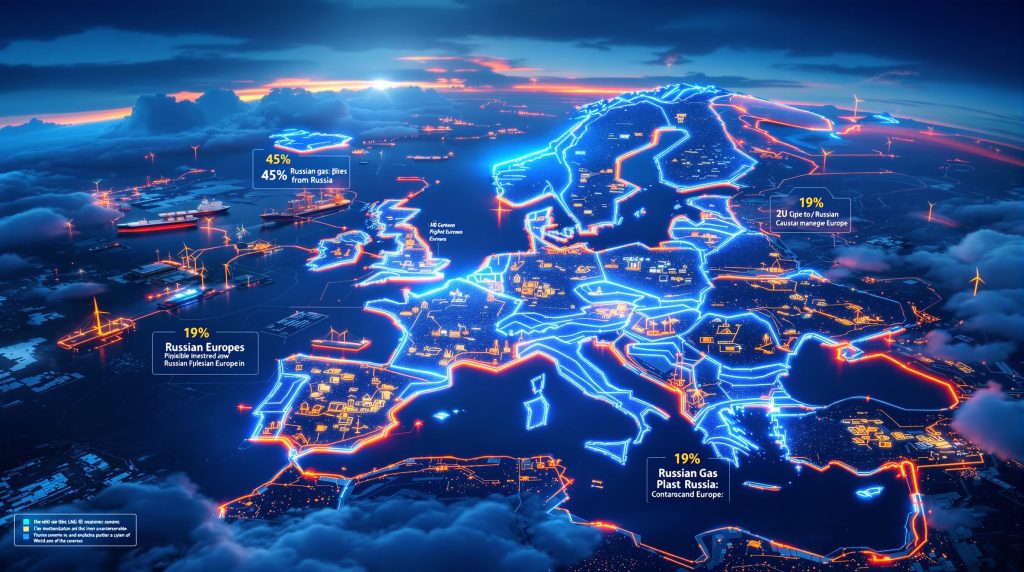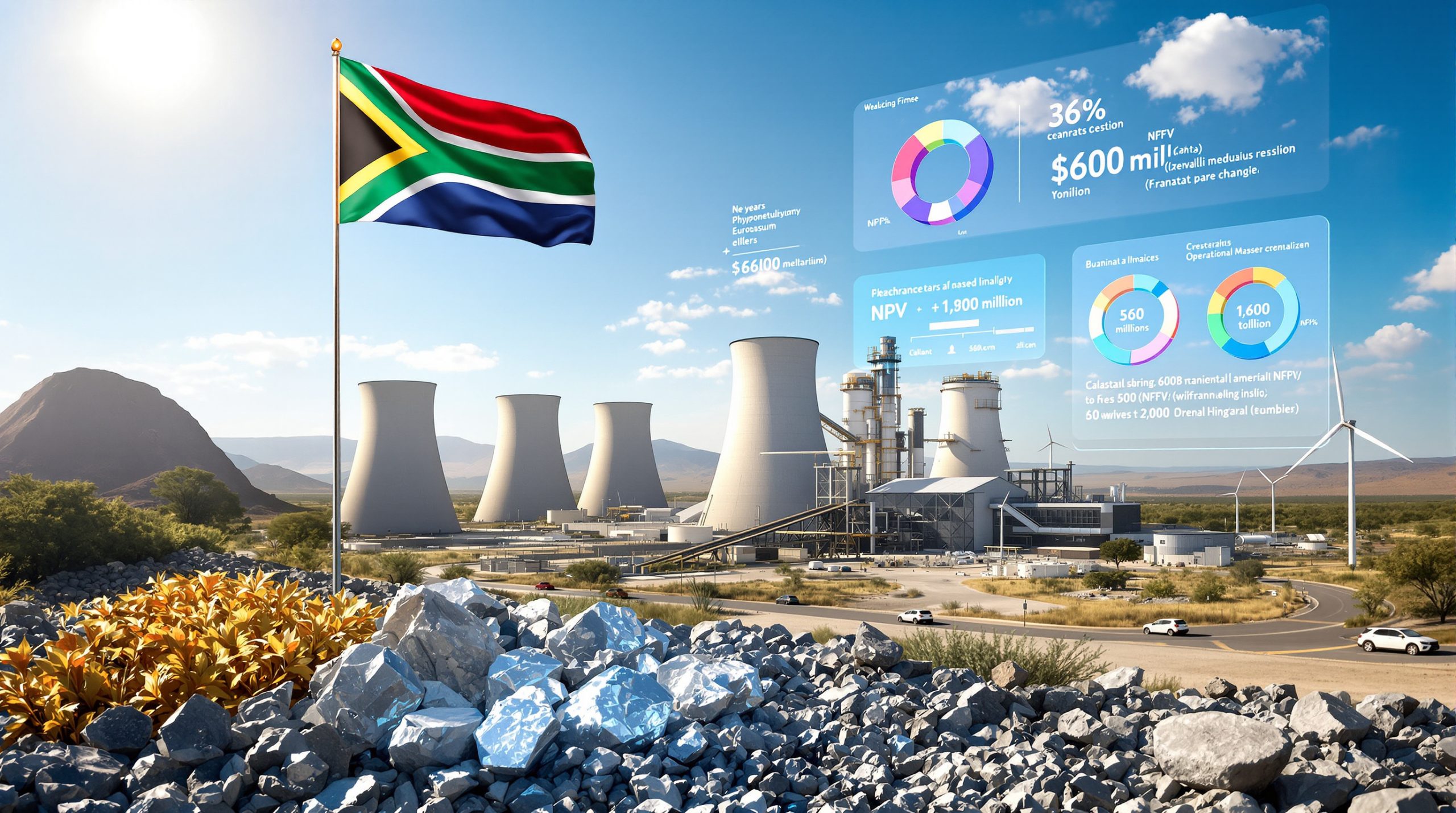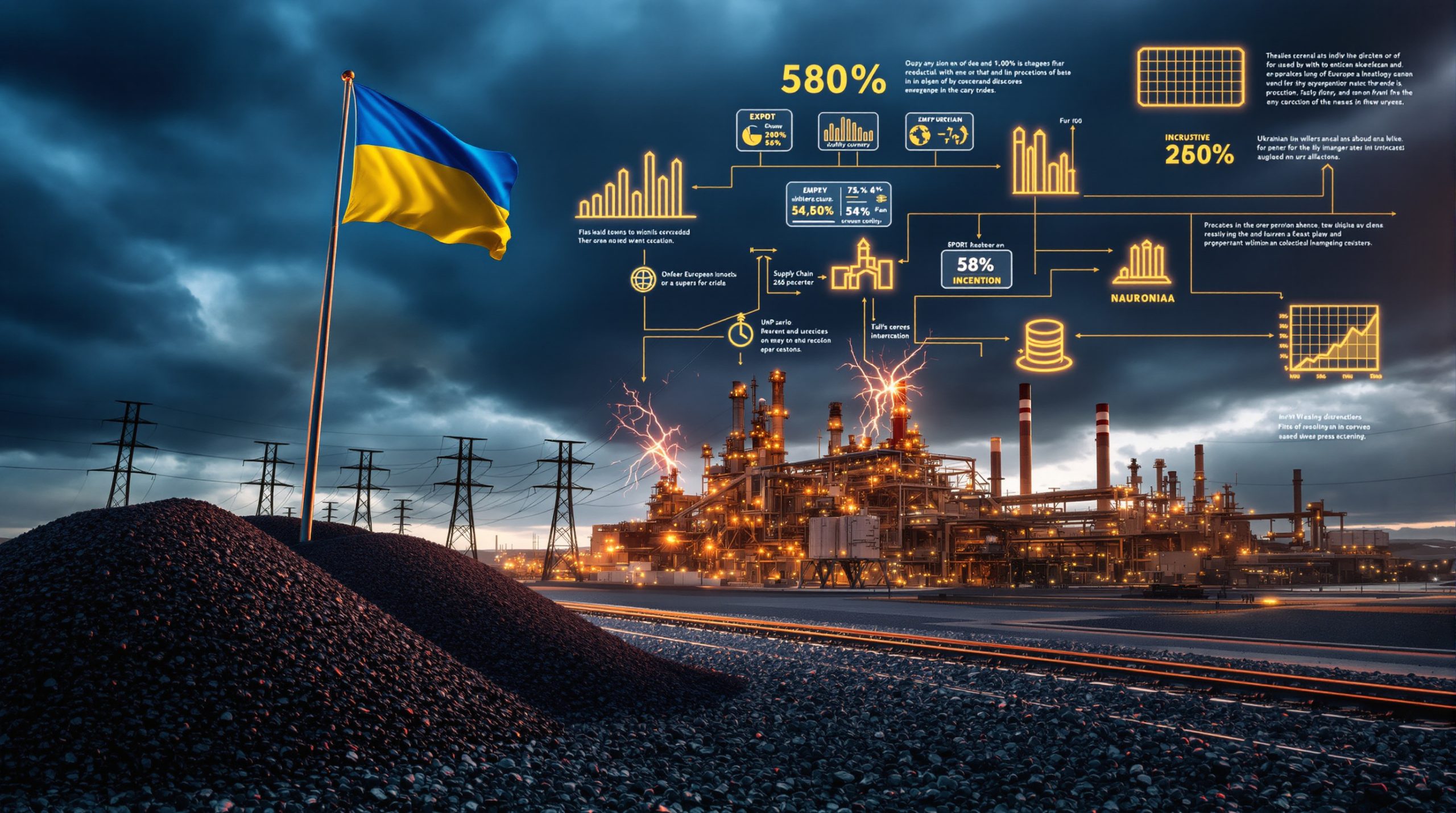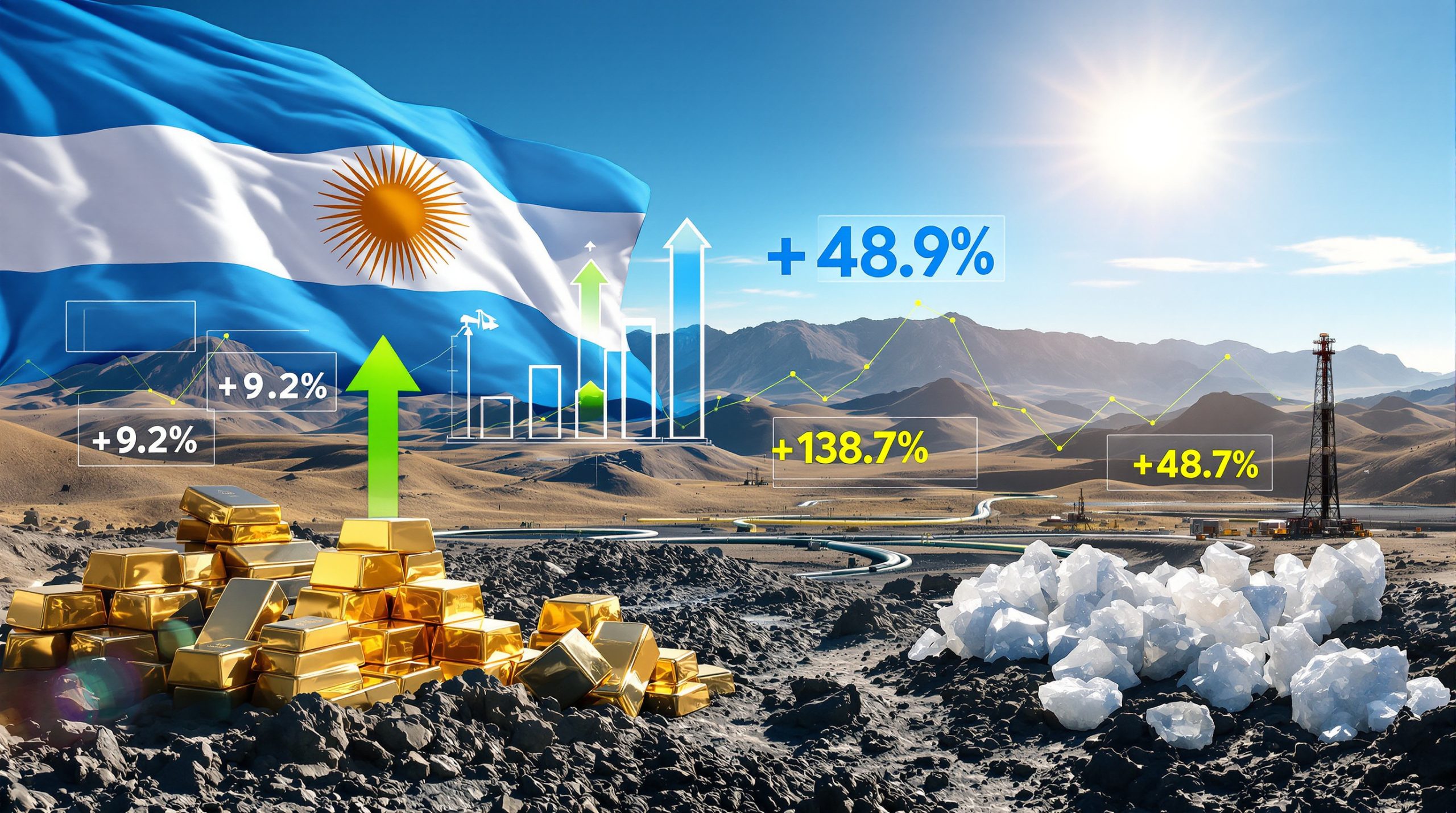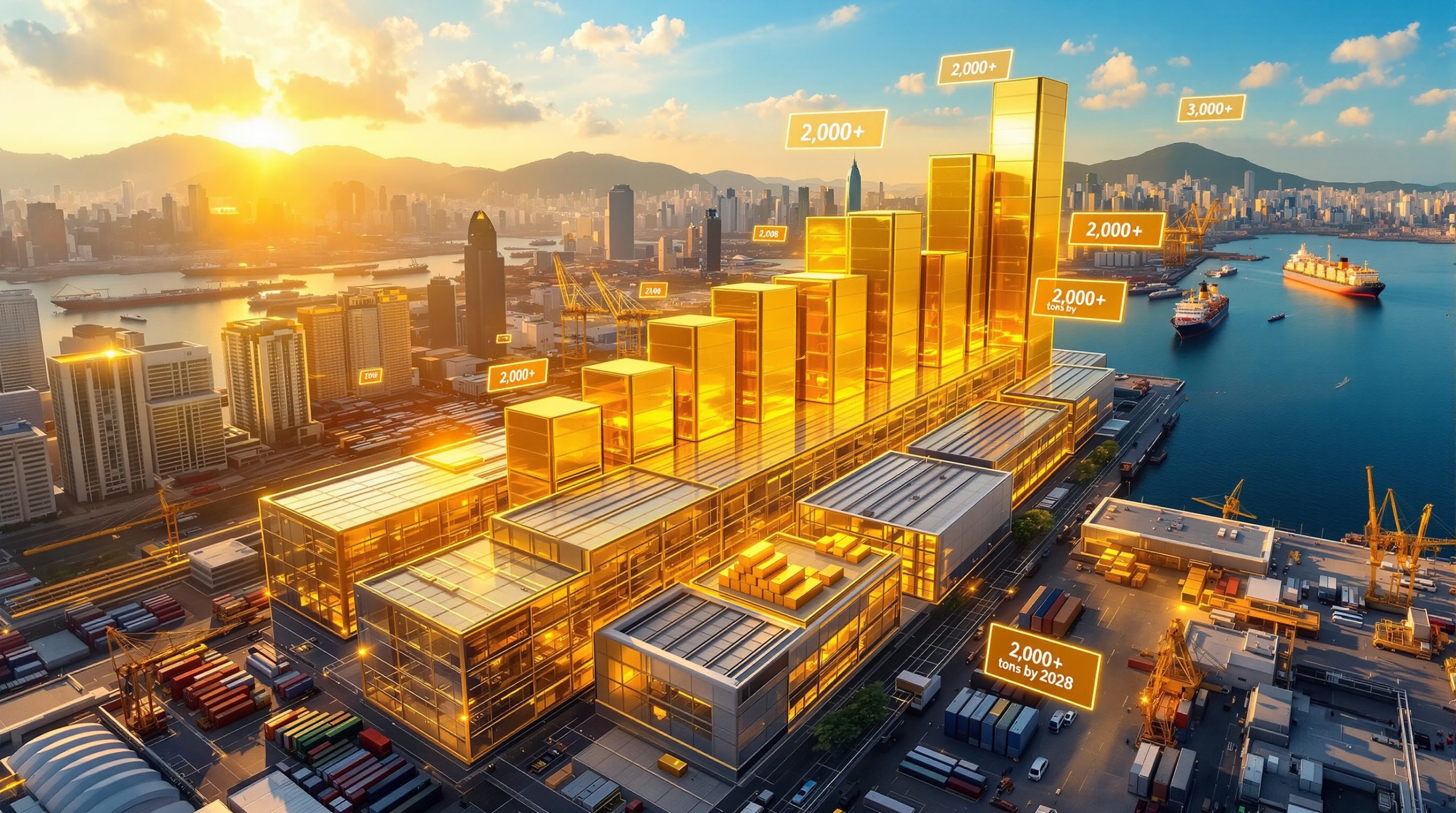The EU's Russian Gas Dependency: A Shifting Energy Landscape
The European Union's relationship with Russian gas has undergone dramatic transformation since 2022. Once dependent on Russia for nearly 40% of its natural gas imports, the EU has rapidly diversified its energy sources while implementing structural changes to its energy infrastructure and policy framework. This shift represents one of the most significant energy transitions in modern European history, driven by both geopolitical necessity and climate objectives.
Current State of EU-Russia Gas Relations
The EU has already reduced Russian gas imports from approximately 40% of total gas imports in 2021 to around 20% by early 2024, according to data from the European Commission. This reduction occurred through a combination of increased LNG imports, pipeline diversification, demand reduction measures, and accelerated renewable energy deployment.
However, recent Eurostat data shows a concerning pattern: Russian gas imports increased slightly in early 2024 in certain member states, highlighting the challenges of completely severing energy ties that have been established over decades.
How Quickly Could the EU Completely End Russian Gas Imports?
What's the Official EU Timeline for Quitting Russian Gas?
The European Union has established a formal timeline to completely phase out Russian energy imports, including natural gas:
- End of 2025: Termination of all spot contracts for Russian gas
- January 1, 2028: Complete ban on Russian natural gas imports
- End of 2027: Cessation of all Russian energy imports, including oil and nuclear materials
This gradual approach aims to ensure energy security while minimizing market disruption. The European Commission has emphasized that this timeline represents a careful balance between urgency and practicality.
Could the EU Accelerate Its Russian Gas Exit?
Some energy experts and officials believe the EU could move much faster than the official timeline suggests. Recent statements from U.S. Energy Secretary suggest that the EU could potentially eliminate Russian gas dependency within 6-12 months if properly coordinated.
This accelerated timeline would require:
- Maximizing LNG imports from the United States and other global suppliers
- Rapidly expanding regasification capacity at European ports
- Implementing more aggressive energy conservation measures
- Accelerating renewable energy deployment
- Temporarily increasing coal usage for electricity generation
However, this accelerated approach would likely come with higher energy prices and potential supply disruptions, particularly during peak winter demand periods.
Key Challenges to Quitting Russian Gas
Infrastructure Limitations
The EU faces several infrastructure challenges in its quest to eliminate Russian gas:
- LNG Terminal Capacity: While the EU has increased its regasification capacity, bottlenecks still exist in certain regions
- Internal Pipeline Networks: Gas distribution within Europe requires significant upgrades to move gas from western ports to eastern countries
- Storage Limitations: Seasonal storage capacity needs expansion to ensure winter supply security
Recent analyses from energy consulting firms estimate that €25-30 billion in additional infrastructure investment would be needed to fully support a Russian gas exit by 2027.
Economic Considerations
The economic impact of quitting Russian gas varies significantly across EU member states:
| Country | Russian Gas Dependency (2024) | Estimated GDP Impact of Immediate Exit |
|---|---|---|
| Germany | 24% | 0.5-1.5% GDP reduction |
| Italy | 15% | 0.3-0.8% GDP reduction |
| Austria | 45% | 1.2-2.5% GDP reduction |
| Hungary | 85% | 3.0-5.0% GDP reduction |
| Finland | 17% | 0.2-0.7% GDP reduction |
Countries with higher dependency face more significant economic challenges, explaining some of the resistance to accelerated timelines.
Political Willpower and Member State Alignment
The EU's ability to quit Russian gas is significantly influenced by political factors:
- Varying Dependency Levels: Eastern European countries generally have higher Russian gas dependency
- Different Energy Mixes: Some countries have more diversified energy portfolios than others
- Historical Relationships: Certain member states maintain stronger economic ties with Russia
- Domestic Politics: Energy prices remain a sensitive political issue in many EU countries
These political considerations explain why the EU has opted for a phased approach rather than an immediate ban. Furthermore, the energy transition challenges faced by EU countries mirror those seen globally, requiring careful balancing of economic impacts with environmental goals.
How Is the EU Replacing Russian Gas?
Diversification of Supply Sources
The EU has dramatically diversified its gas import sources since 2022:
- U.S. LNG: Increased from 22% of EU LNG imports in 2021 to approximately 40% in 2024, according to European Commission data
- Qatar: Boosted supplies through new long-term contracts
- Norway: Maximized pipeline deliveries through existing infrastructure
- Azerbaijan: Expanded capacity through the Southern Gas Corridor
- North Africa: Increased imports from Algeria and Egypt
This diversification strategy has been crucial in reducing Russian leverage over European energy markets. The US Natural Gas Forecast suggests continued supply expansion that could further support European diversification efforts.
Accelerated Renewable Energy Deployment
The EU's REPowerEU plan has accelerated renewable energy deployment:
- Solar capacity increased by over 40% in 2023 compared to 2022
- Wind power installations grew by approximately 30% in the same period
- Biomethane production expanded by 15-20%
These renewable sources directly reduce the need for natural gas in electricity generation and heating.
Energy Efficiency and Demand Reduction
The EU has implemented significant energy efficiency measures:
- Industrial gas consumption decreased by 20-25% between 2021 and 2024
- Residential heating efficiency improvements reduced demand by 10-15%
- Smart grid deployment optimized energy distribution and reduced waste
These demand-side measures have been as important as supply diversification in reducing Russian gas dependency.
Case Studies: Countries Leading the Russian Gas Exit
Lithuania's Complete Independence
Lithuania achieved complete independence from Russian gas in 2022 through:
- Construction of the Klaipėda LNG terminal
- Integration with the broader European gas network
- Aggressive energy efficiency programs
- Renewable energy expansion
This small Baltic nation demonstrates that complete independence from Russian gas is achievable in a relatively short timeframe with proper planning and investment.
Germany's Rapid Transformation
Germany, once heavily dependent on Russian gas, has made remarkable progress:
- Reduced Russian gas imports from approximately 55% in 2021 to less than 25% in 2024
- Built five floating LNG terminals in less than 18 months
- Accelerated renewable energy deployment under the "Easter Package" legislation
- Implemented industrial energy efficiency programs
Germany's experience shows that even large, industrialized economies can rapidly reduce Russian gas dependency when properly motivated.
What Would an Accelerated Exit Timeline Look Like?
The Six-Month Scenario
Some experts suggest the EU could eliminate Russian gas within six months through:
-
Emergency Measures:
- Mandatory industrial gas rationing
- Temperature restrictions for public buildings
- Temporary reactivation of coal and nuclear plants
-
Maximum LNG Imports:
- Redirecting global LNG supplies to Europe at premium prices
- Utilizing all available regasification capacity
- Deploying additional floating storage and regasification units
-
International Cooperation:
- Coordinated release of strategic gas reserves
- Energy sharing agreements with non-EU neighbors
- Global diplomatic pressure to secure alternative supplies
This scenario would likely involve significant economic costs and potential energy shortages.
The 12-Month Scenario
A more realistic accelerated timeline might be 12 months, involving:
-
Targeted Infrastructure Development:
- Fast-tracking key pipeline interconnectors
- Expanding storage capacity in strategic locations
- Deploying additional LNG import capacity
-
Coordinated Demand Reduction:
- Incentivized industrial energy efficiency
- Smart grid deployment for load management
- Residential energy conservation programs
-
Maximized Alternative Production:
- Accelerated biogas and biomethane production
- Temporary increases in North Sea gas production
- Heat pump deployment for residential heating
This scenario balances urgency with practical constraints while minimizing economic disruption.
How Would Quitting Russian Gas Impact Energy Markets?
Price Implications
A rapid exit from Russian gas would have significant market impacts:
- Short-term Price Spikes: European gas prices could increase 30-80% during the transition
- Global LNG Market Tightening: Redirecting supplies to Europe would affect Asian markets
- Gradual Normalization: Prices would likely stabilize within 12-24 months as new supply sources come online
These price dynamics explain why many policymakers prefer a gradual approach to minimize market disruption. Additionally, oil price movements could further complicate the energy market landscape as countries shift between different fuel sources.
Long-term Market Restructuring
Beyond immediate price effects, quitting Russian gas would fundamentally reshape energy markets:
- Accelerated LNG Infrastructure Development: More export and import terminals globally
- Pipeline Network Reconfiguration: New interconnections within Europe
- Contract Structure Changes: Move away from long-term contracts toward more flexible arrangements
- Integration with Renewable Systems: Gas increasingly used as backup for intermittent renewables
This restructuring represents both challenges and opportunities for energy market participants.
What Are the Geopolitical Implications?
Impact on Russia
Russia would face significant consequences from losing the European gas market:
- Revenue Reduction: Gas exports to Europe generated approximately $50-60 billion annually in recent years
- Infrastructure Stranding: Much of Russia's western-oriented gas infrastructure would become underutilized
- Limited Alternatives: While China offers some alternative demand, pipeline capacity constraints limit quick pivoting
- Economic Pressure: Combined with other sanctions, gas export losses would further strain Russia's economy
These impacts explain why Russia has historically used gas as a geopolitical lever. The ongoing US‑China trade impacts could also influence Russia's ability to pivot eastward with its energy exports.
Shifting Global Alliances
The EU's exit from Russian gas is reshaping global energy relationships:
- Strengthened Transatlantic Energy Ties: Increased U.S. LNG exports to Europe
- Middle East Partnerships: New gas supply agreements with Qatar and other producers
- Central Asian Connections: Expanded relationships with Azerbaijan and other Caspian producers
- North African Cooperation: Renewed focus on Algeria, Egypt, and other Mediterranean suppliers
These new relationships are creating lasting geopolitical realignments beyond the energy sector.
Is the EU's Russian Gas Exit Plan Realistic?
Expert Assessments
Energy analysts offer varying perspectives on the EU's ability to quit Russian gas:
- Optimistic View: Complete independence is achievable by late 2026 with proper coordination and investment
- Moderate View: The official 2028 timeline is realistic but requires consistent policy implementation
- Cautious View: Complete independence may face delays in certain regions, particularly southeastern Europe
The consensus suggests that while challenging, the EU's plan is fundamentally achievable with sustained political will. As The Guardian reports, European officials have repeatedly stressed that there is "no going back" to pre-2022 dependency levels.
Critical Success Factors
Several factors will determine the ultimate success of the EU's Russian gas exit:
- Infrastructure Investment: Continued funding for key gas infrastructure projects
- Policy Consistency: Maintaining focus despite potential political changes
- Market Integration: Enhanced coordination between member states
- Demand Management: Successful implementation of efficiency measures
- Renewable Acceleration: Meeting or exceeding renewable energy targets
These factors highlight that success requires a comprehensive approach rather than focusing solely on alternative gas supplies. The OPEC production impact on global energy markets will also influence how quickly alternative energy sources can be developed and deployed.
Conclusion: A Transformative Energy Transition
The EU's exit from Russian gas represents one of the most significant energy transitions in modern history. While the official timeline extends to 2028, evidence suggests that with proper coordination and political will, this timeline could potentially be accelerated to 12-18 months in an emergency scenario.
This transition involves not just replacing one gas supplier with others, but fundamentally restructuring Europe's energy system toward greater diversification, flexibility, and sustainability. The process demonstrates both the challenges of energy dependency and the remarkable adaptability of modern energy systems when properly motivated.
The ultimate success of this transition will depend on sustained political commitment, strategic infrastructure investment, and continued progress in developing alternative energy sources. If successful, the EU will emerge with a more resilient, diversified, and sustainable energy system that enhances both its economic security and geopolitical independence.
FAQ: EU's Russian Gas Exit
How much Russian gas does the EU still import?
As of early 2024, Russian gas accounts for approximately 20% of EU gas imports, down from 40% in 2021. This percentage varies significantly by country, with some eastern European nations still heavily dependent.
Could the EU survive a complete cutoff of Russian gas?
Yes, but with varying degrees of difficulty depending on the season and preparation time. Winter cutoffs would be more challenging than summer ones, and sudden cutoffs more disruptive than planned ones. With proper preparation, the EU could manage a complete cutoff through a combination of alternative supplies, storage utilization, and demand reduction.
What role does LNG play in replacing Russian gas?
LNG has become the primary alternative to Russian pipeline gas, with imports increasing by over 60% since 2021. The EU has rapidly expanded its regasification capacity, with new terminals in Germany, Italy, Greece, and the Baltic states enabling this shift.
How will quitting Russian gas affect EU climate goals?
In the short term, it may slightly slow progress as some countries temporarily increase coal usage. However, in the medium to long term, it will likely accelerate the clean energy transition by stimulating greater investment in renewables and efficiency measures.
What happens to the existing gas pipelines from Russia to Europe?
Many of these pipelines will likely see significantly reduced utilization or complete abandonment. Some may be repurposed for hydrogen transport in the future, while others will become stranded assets. The Nord Stream pipelines, damaged in 2022, are unlikely to return to service.
Want to Know About the Next Major Mineral Discovery?
Discover how significant ASX mineral discoveries can lead to substantial market returns by exploring Discovery Alert's dedicated discoveries page, where the proprietary Discovery IQ model instantly alerts investors to new opportunities ahead of the broader market. Begin your 30-day free trial today to gain a critical market advantage in your investment decisions.
